To control the automobile emissions use devices such as EGR Valve, PCV Valve, Catalytic Converter, Air Injection, and Evaporative Controls in the automobile.
The emissions that occur in an automobile are through the exhaust pipe (tailpipe), crankcase blow by, Evaporative losses through fuel tank and carburetor. These emissions contain harmful pollutants which affect the environment as well as humans health.
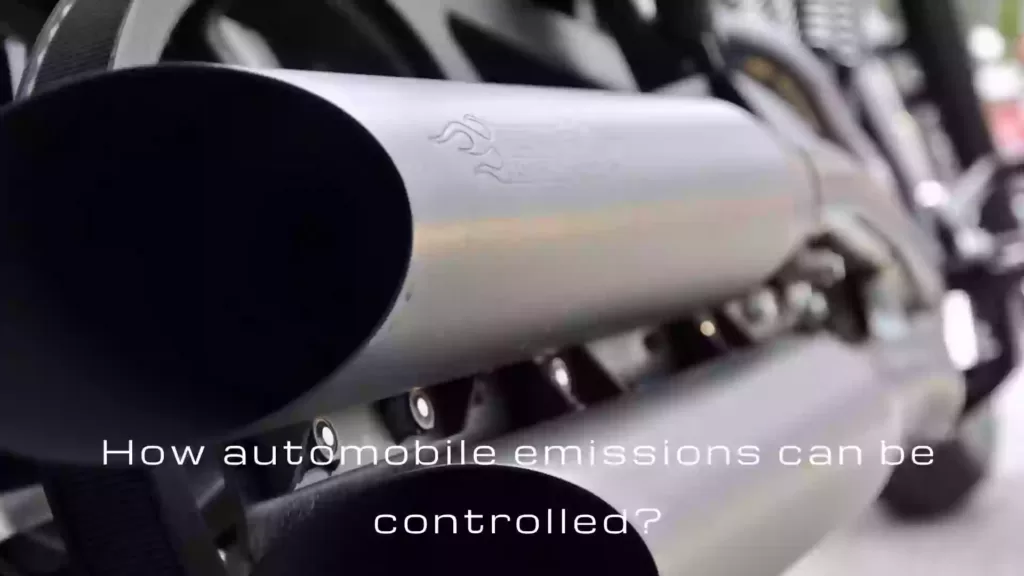
In this article, we’re going to discuss:
- What is emissions in the automobile?
- How does automobile emissions occurs?
- How to control the automobile emissions?
- Effects of automobile emissions
- Does automobile emissions affect the automobile?
- FAQ
- Final thoughts
What is emissions in the automobile?
The emissions mean the release of harmful gases from the automobile. The harmful gases such are Hydrocarbons, Particulate matter and soot, Nitrogen Oxides, Aldehydes, Carbon monoxide, Sulphur oxides etc.
The fuel gases that are losses from the fuel tank or carburetor are contained dangerous hydrocarbons which are releases into the environment which are harmful.
When the emissions of burnt as well as unburnt combustion gases are released from the exhaust pipe (tailpipe), then many hazardous combustion products like Carbon monoxide, Nitrogen Oxides are spreads into the environment.
Therefore releasing such gases from automobiles is known as emissions.
How does automobile emissions occurs?
Generally, automobile emissions occur due to the releases of fuel gases before combustion and after combustion. There are the following three reasons responsible for automobile emissions.
1] Exhaust gas emissions through an exhaust pipe
When the air-fuel mixture burns inside the engine, there are many pollutants with complete as well incomplete combustion are directly released to the environment through the exhaust pipe.
Example:- CO, NOx, HC, SOx.
2] Evaporative losses through fuel tank and carburetor
The evaporative losses occur due to escape gases to the environment through the vent to the fuel tank valve, at the time of refueling vehicle, vent in the carburetor. These emissions vary in rate as per driving conditions. There are about 20% of automobile emissions are occurring through Evaporative losses.
To reduce evaporative losses through the fuel tank, many advanced technologies have been founded such as the modern engine uses the well-sealed valve with a charcoal canister.
3] Emissions through the crankcase
It is the second big reason for automobile emissions. During the combustion process in the cylinder, some gases from the combustion chamber enters into the crankcase, which are passes through the piston rings and cylinder wall, This is known as the Crankcase blow by.
These gases mixes with the oil present in the crankcase and then escapes to the environment through a breather tube connected to the vent in the crankcase. These gases contain unburnt hydrocarbons which are toxic. This crankcase emission problem was in the old vehicles which is solved in modern vehicles with the help of positive crankcase ventilation (PCV) technology which will discuss further.
How to control the automobile emissions?
The emissions from the automobile cause the bad effects on the environment as well as on human health. Hence it becomes necessary to control these emissions. There are many technologies that have been invented to control such exhaust emissions. In automobiles to control these emissions the following emission control devices are used.
- EGR Valve (Exhaust gas recirculation)
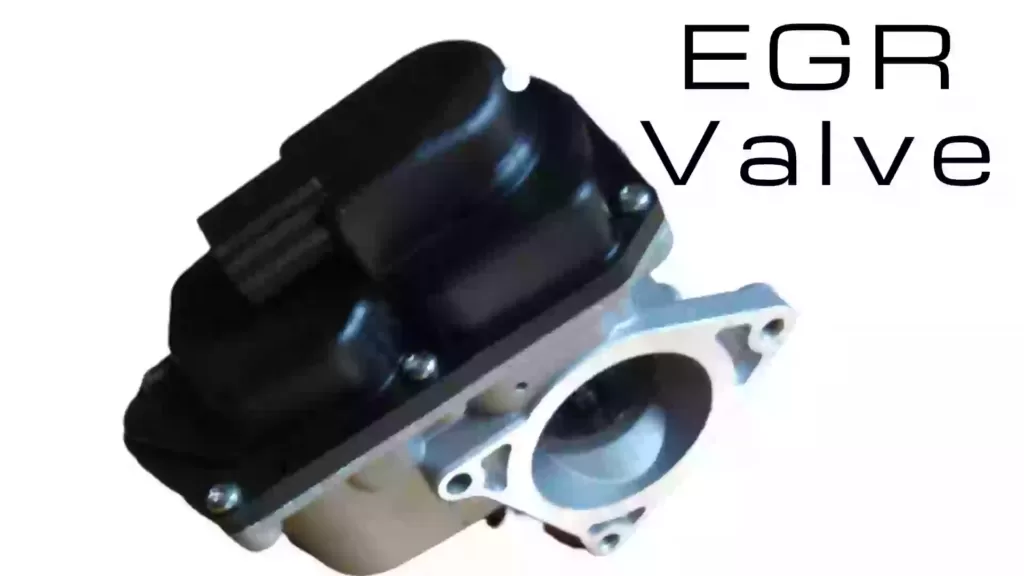
When nitrogen and oxygen present in the atmospheric air enters into the combustion chamber, At the stage of high temperature, this is causes the formation of NOx inside the combustion chamber.
The EGR is used to reduce the production of Nitrogen oxide (NOx) which is forms at high temperature in the combustion chamber. The EGR recirculates the amount of exhaust gases to the combustion chamber through air intake in the intake manifold. This gas mixes with oxygen in the air and helps to reduce the high heat produces in the combustion chamber.
Hence the EGR helps to reduce the combustion chamber temperature resulting in reducing the formation of NOx since NOx are formed only at the high combustion chamber temperature.
The Nitrogen oxide produces from combustion are injurious to the environment and humans.
Hence installing the EGR reduces a greater amount of NOx formation which is very helpful as per environmental aspects.
- PCV Valve (Positive crankcase ventilation)
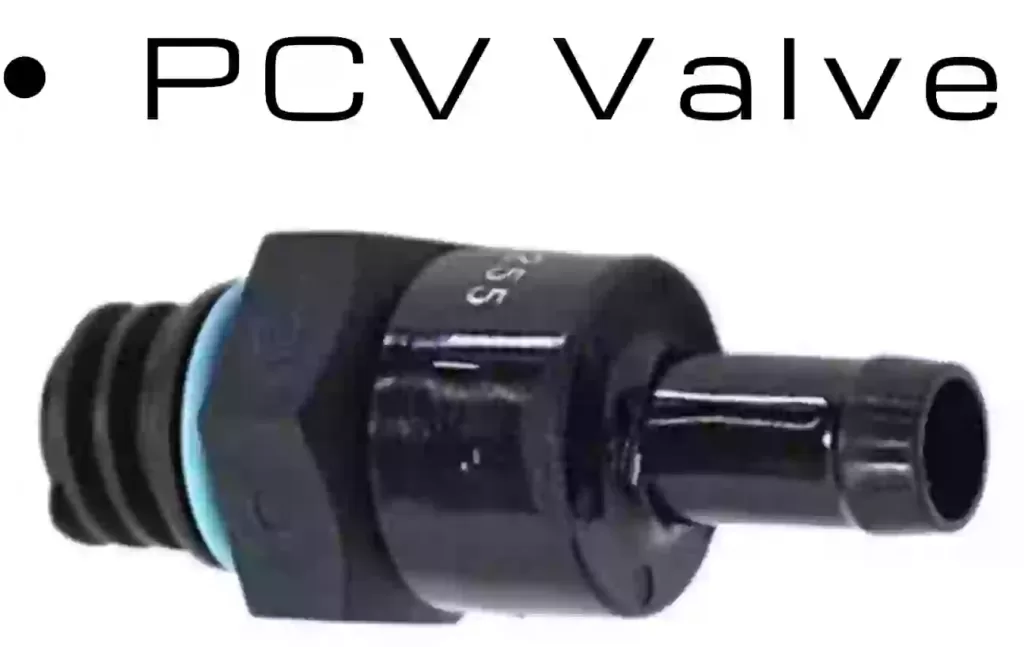
During the normal combustion, the gases from the combustion chamber pass through the cylinder wall and piston rings and come into the crankcase which are known as “Crankcase blow by”. This gases mixes with the heated oil present in the crankcase. In old vehicles, these gases are emitted into the environment through breather tubes but this are causes air pollution and human health problems. But this problem is solved in modern vehicles with the use of a PCV valve.
Positive crankcase ventilation or PCV means a valve that plays role in provides vent to crankcase blow by gases and again send them to the combustion chamber with a fresh charge. Simply, the PCV is a unidirectional spring-loaded flow valve.
The PCV valve circulates blow by gases from the crankcase to the intake manifold vacuum then it mixes with the fresh charge in the combustion chamber and after combustion, this are releases through the exhaust valve. Hence this method reduces unburnt gases emissions from the crankcase of automobiles.
Therefore the PCV valve is founded to overcome these emissions and protect the environment from pollution.
The input of this valve is connected to the crankcase and the output of this valve is connected to the engine’s intake manifold vacuum. The extra line is connected to the crankcase from the intake manifold which is a breather line. the breather line helps to provide a supply of fresh air to the crankcase which is required to remove the previous gases from the crankcase.
- Catalytic Converter
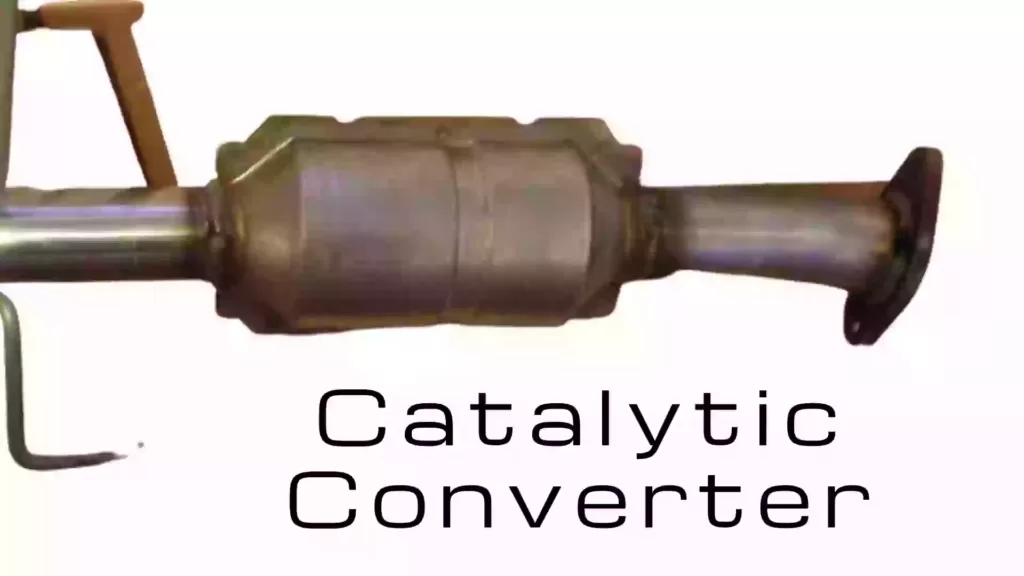
The catalytic converter is the device that reduces the amount of pollutants from the engine exhaust gases hence it plays a big role in reducing automobile exhaust emissions.
A catalytic converter helps to complete the oxidation and reduction process of the unburnt gases after engine exhaust which helps in reducing the amount of pollutants from the exhaust gases. Hence for this process, there are catalysts present in the catalytic converter which are Platinum or Palladium, rhodium.
The catalyst which is made up of platinum acts as an oxidation catalyst and the catalyst made up of rhodium is acts as a reduction catalyst. When the exhaust gases pass through the catalytic converter the reactions occur inside catalysts and it converts the toxic gases such as Hydrocarbons, CO, and Nitrogen oxides to non-harmful gases such as H2O, Nitrogen and Oxygen, Carbon dioxide.
The catalytic converter is located after the engine exhaust and before the muffler since to work properly catalytic converter needs a high temperature.
There are generally 2 types of catalytic converter one is a two-way catalytic converter and the other is a three-way catalytic converter.
- Air Injection
Air injection is the exhaust emission control technology which is the first exhaust automobile emission control technology founded in 1966. It is also called a secondary air injection.
The incomplete combustion of fuel causes the emission of toxic gases such as carbon monoxide, unburnt hydrocarbons through the exhaust pipe. Therefore air injection is a technology located after the engine’s exhaust helps to complete the combustion of hot unburnt gases and then releases them into the atmosphere.
This system is located after engine exhaust and consists of the pump which supplies the fresh air for oxidation from the intake manifold to this system for complete the combustion process of heated unburnt gases present in the exhaust gases.
- Evaporative Controls with charcoal canister
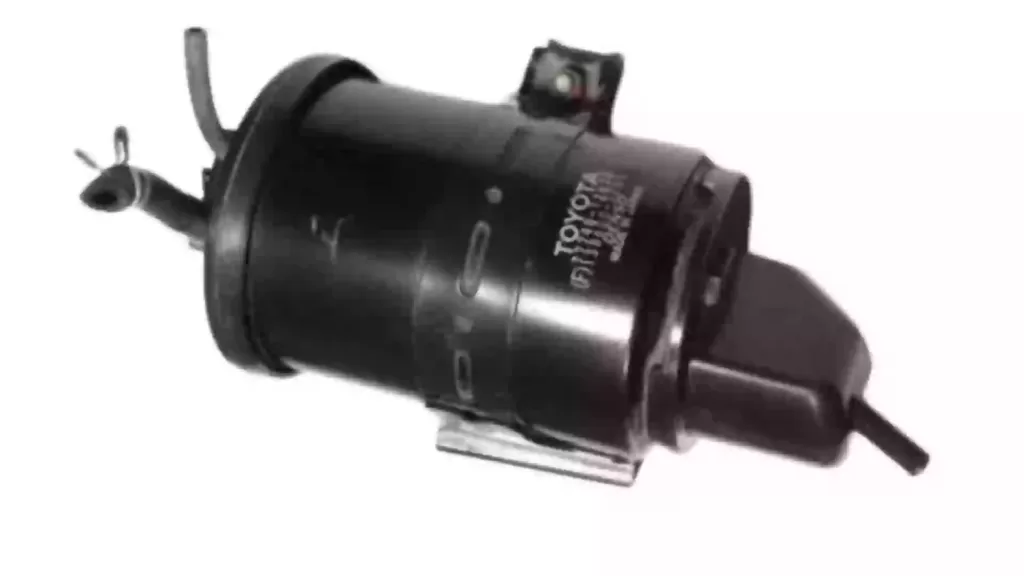
The evaporative losses cause the emission of harmful hydrogen into the atmosphere. These losses are caused due to the evaporation of fuel from the fuel tank, carburetor which are releases hydrocarbons into the atmosphere. Hence to avoid such emissions, a device used in vehicles is known as a Charcoal canister.
The charcoal canister takes the evaporative losses from the fuel tank and engine compartment and converts them into liquid fuel and then sends them to the intake manifold.
It is consists of charcoal which help in this process. There are two input lines and one output line to the charcoal canister. One input line absorbs the vapors from the engine compartment and another input line absorbs the vapors from the fuel tank while the output line supplies the recovered fuel to the intake manifold. This system requires a sealed cap to the fuel tank.
| 1] | EGR (Exhaust gas recirculation) | Exhaust emission control |
| 2] | PCV Valve (Positive crankcase ventilation) | Evaporative emission control |
| 3] | Catalytic Converter | Exhaust emission control |
| 4] | Air Injection | Exhaust emission control |
| 5] | Evaporative Controls with a charcoal canister | Evaporative emission control |
Effects of automobile emissions
Automobile emission has a big part in the World’s air pollution problem. There are many toxic pollutants releases with automobile emissions which are effects to the environmental life cycle.
The pollutants released from the automobile emissions are as follows:-
- Hydrocarbons
The hydrocarbons are released into the atmosphere through evaporation from the fuel tank, carburetor, refueling as well as unburnt hydrocarbons are releases from engine exhaust due to incomplete combustion.
Hydrocarbon is a harmful gas that causes environmental problems and many health problems such as cancer, heart problems, breathing problem, etc.
- Particulate matter and soot
Particulate matter and soot are the small particles released from the engine after complete combustion. The presence of such particles in the atmosphere leading to problems in human inhalation by which causes respiratory problems.
Particulate matter and soot are also responsible for acid rain and air pollution. Hence to stop emitting such particles into the atmosphere particulate filter is installed in the latest automobiles.
- Nitrogen Oxides
When nitrogen and oxygen are present in the atmosphere enters into the engine, at high temperature during combustion engine releases the nitrogen oxides through the exhaust.
Nitrogen oxide causes smog formation and humans breathing problems.
- Carbon monoxide (CO)
Carbon monoxide obtains at engine exhaust as a result of incomplete combustion. In the engine, due to an incorrect air-fuel mixture, the carbon monoxide releases through the exhaust.
The amount of carbon monoxide obtains in the exhaust is less in the case of CI engine as compared to SI engine since in SI engine, due to rich mixture causes incomplete fuel oxidation resulting CO is released in the exhaust.
The inhalation of such toxic carbon oxide causes headaches, weariness, nausea like health problems.
- Sulphur oxides
The Sulphur oxides are releases through the engine exhaust system when Sulphur present in fuel mixes with oxygen in the combustion chamber.
The emission of Sulphur oxide contributes to smog formation, health effects, air pollution, and acid rain. The use of fuel containing Sulphur leads to corrosion in the engine and exhaust systems.
Does automobile emissions affect the automobile?
Yes, Automobile emissions will affect the engine performance also such evaporative emissions and crankcase blow by causes the more fuel consumption rate.
FAQ
-
What is automobile emission How can it be controlled?
Automobile emission means the releasing of polluted gases from the automobile Hence such automobile emissions can be controlled by the use of various technologies like the catalytic converter, PCV valve, EGR valve, Charcoal canister, etc.
-
How is emission control achieved?
The automobile emissions can be achieved with the installation of many technologies in automobiles such as EGR valve, catalytic converter, Charcoal canister, PCV valve, etc.
-
Which device is used in automobile engine for controlling emissions?
PCV valve, Charcoal canister, Catalytic converter, EGR valve such devices are used in an automobile for controlling emissions
-
What is an emissions control system?
The emissions control system is the system that works for the control emissions from the automobile.
-
What part of a car reduces emissions?
The part of the car contributes in reducing the emissions are PCV valve, Charcoal canister, Catalytic converter, EGR valve, etc.
Final thoughts
There are many technologies that are installed in the vehicles which are works for the control the emissions from our vehicles and helps to keep the environment clean. It should be necessary to do the regular maintenance of that to work properly.
References:-